I'm building a Random Forest Binary Classsifier in python on a pre-processed dataset with 4898 instances, 60-40 stratified split-ratio and 78% data belonging to one target label and the rest to the other. What value of n_estimators should I choose in order to achieve the most practically useful / best possible random forest classifer model? I plotted the accuracy vs n_estimators curve using the code snippet below. x_trai and, y_train are the features and target labels in training set respectively and x_test and y_test are the features and target labels in the test set respectively.
from sklearn.ensemble import RandomForestClassifier
from sklearn.metrics import accuracy_score
scores =[]
for k in range(1, 200):
rfc = RandomForestClassifier(n_estimators=k)
rfc.fit(x_train, y_train)
y_pred = rfc.predict(x_test)
scores.append(accuracy_score(y_test, y_pred))
import matplotlib.pyplot as plt
%matplotlib inline
# plot the relationship between K and testing accuracy
# plt.plot(x_axis, y_axis)
plt.plot(range(1, 200), scores)
plt.xlabel('Value of n_estimators for Random Forest Classifier')
plt.ylabel('Testing Accuracy')
Here, it is visible that a high value for n_estimators will give a good acuracy score, but it is fluctuating randomly in the curve even for nearby values of n_estimators, so I can't pick the best one precisely. I only want to know about the tuning of n_estimators hyperparameter, how should I choose it, please help. Should I use ROC or CAP curve instead of accuracy_score? Thanks.
